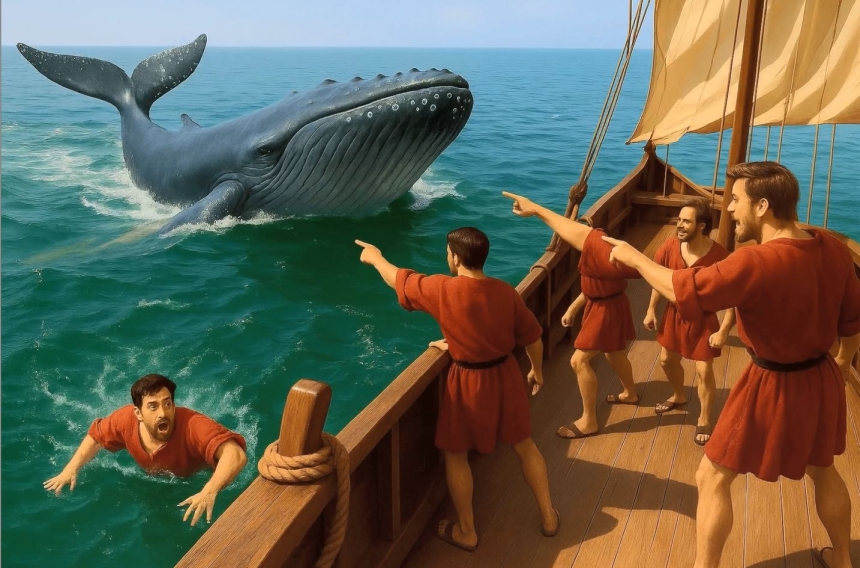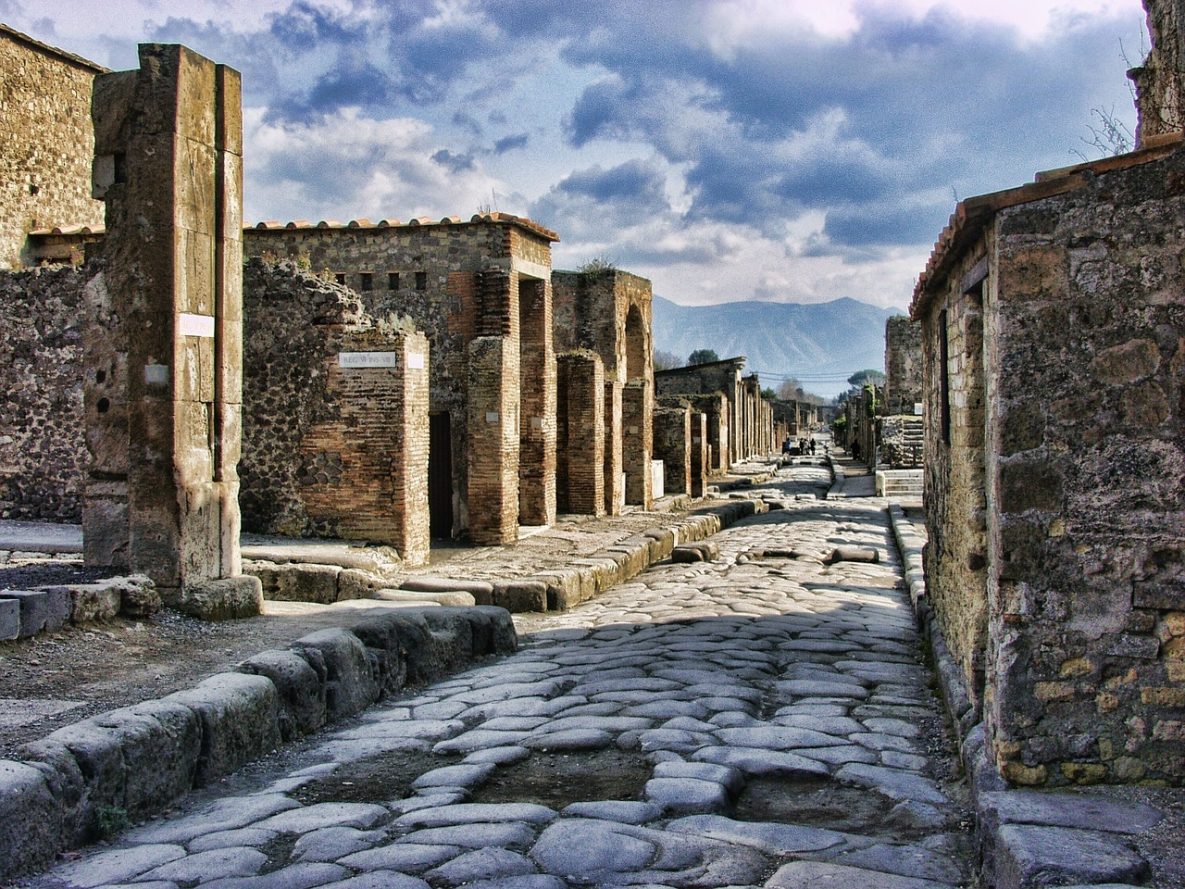
Modern technology has unearthed the latest Pompeii victim, a 7 or 8 year old child found in Bath house at the site of the ancient volcanic eruption. The child entered what is known as the Central Bath complex, seeking shelter from the clouds of smoke and ash falling on the ill fated city.

Pompeii is located 14 miles southeast of Naples, Italy at the southeastern base of Mount Vesuvius. During a summer morning in A.D. 79 a horrific eruption of the great volcano within Mount Vesuvius buried the town and nearby communities of Herculaneum, Stabiae, and Torre Annunziata in up to 20 feet of ash and volcanic debris. The city of about 11,000 inhabitants was utterly destroyed along with her people. The settlement remained lost for 1500 years until it was rediscovered in 1599. When the site was originally excavated plaster was used to fill the layers of volcanic rock where voids were located. Those voids were bodies of those who were burned to bits in the disaster, leaving an unprecedented replication of their human counterparts in the hardened rocks.
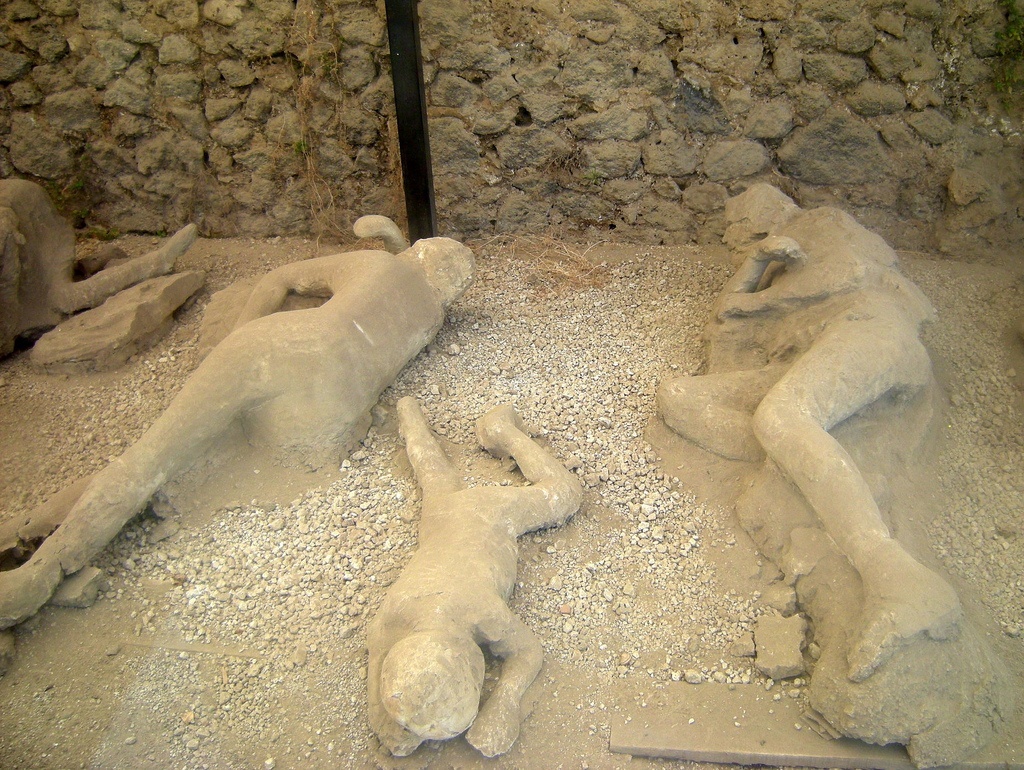
In this recent find, a skeleton of a youngster was discovered in a layer of accumulation of earth and volcanic deposits less than 4 inches deep, which is astounding for the many times the area has been searched and excavated over a four hundred year time period. The child’s remains have yet to be determined whether boy or girl and are currently being examined by the Laboratory of Applied Research of the Archaeological Site of Pompeii for further analysis.
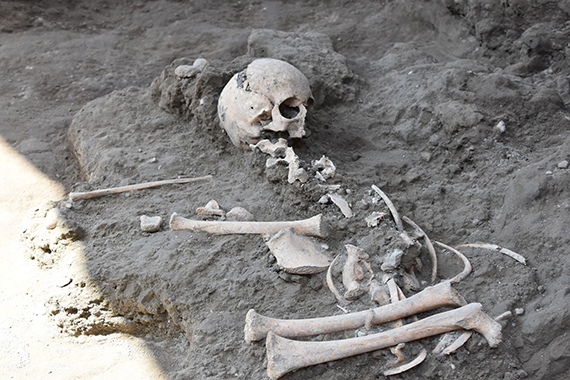
The find is unusual – the deceased has been only somewhat immersed by the volcano’s pyroclastic flow; a mix of gas and volcanic material, rather than destroyed by molten lava or encapsulated in searing ash during the final stage of the eruption. The deadly gas mixture entered directly through the windows of the Central Bath complex and saturated the structure and the victim. The lack high-temperature Lapilli has left a remarkable skeleton, that differs from many of the citizens of Pompeii whose bones and bodies were incinerated by intense heat and only their castings in rock remain.

Massimo Osanna, Director of the Pompeii site states “Pompeii is a turning point for archaeological research… for exceptional discoveries that give strong emotions as with this find.”
The Central baths were erected in an area the size of an entire city block. Much of the complex was constructed from earlier buildings and structures leveled in the earthquake of 62 AD. The building was erected after the earthquake and not completed at the time of the eruption. Restoration of the complex has been ongoing and the latest attempts are to restore the walls, levels of sills, gaps, plaster ornaments, and masonry work.
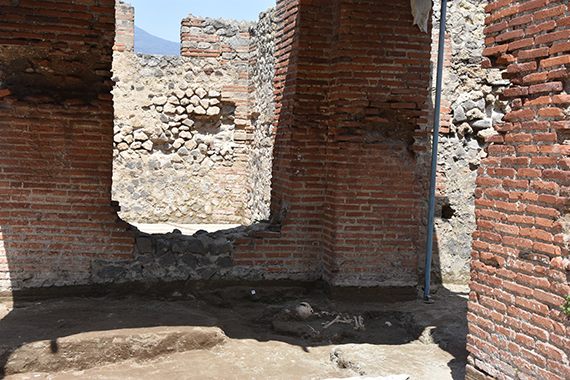
Pompeii has fascinated mankind for thousands of years. Excavations have brought back her streets, and homes and business areas for tourists and the world to see. The memory of Pompeii lives on, but the fear and terror of that faithful day so many centuries ago are forever enshrined in the rock and ash castings of the faces of her unfortunate citizens.
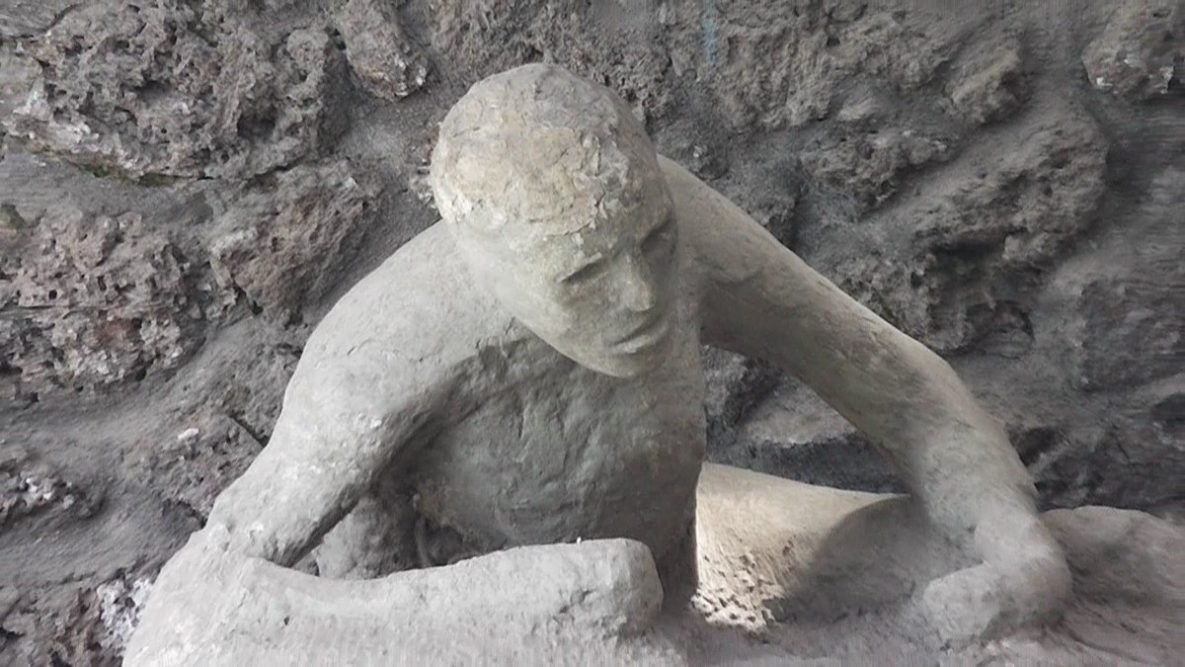
Interesting links:
http://www.foxnews.com/science/2018/04/27/extraordinary-find-made-in-pompeii-bath-house.html
https://www.thelocal.it/20180426/child-skeleton-discovered-pompeii
